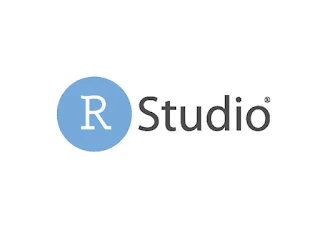What tool is used in Data Science
What is data science software?
The answer to all these questions is in this blog specially Top 10 tools use master in Data Science
1.SQL
What is SQL?
Structured Query Language
SQL is a programming language used to interact with relational databases.
Create
Read
Update
Delete
Database
Database is collection of data in a format that can be easily accessed (Digital)
A software application used to manage our DB is called DBMS (Database Management System)
.jpg)
2. Jupyter Notebook
Another excellent resource for data scientists and others exploring with various cloud-based machine learning models is Jupyter Notebook. It is a fantastic tool for teamwork and collaboration with other data scientists in addition to enabling you to run Python code directly from the browser.
You can share your code and conduct experiments with other data scientists using Jupyter Notebook if you are developing your deep learning models in the cloud.
To work well with other team members, I strongly advise data scientists to get proficient in Jupyter notebooks.
You can share your code and conduct experiments with other data scientists using Jupyter Notebook if you are developing your deep learning models in the cloud.
To work well with other team members, I strongly advise data scientists to get proficient in Jupyter notebooks.
3. Pandas
A Python package called Pandas is used to work with data collections.
Its features include data manipulation, cleansing, analysis, and exploration.
Wes McKinney came up with the moniker "Pandas" in 2008. It alludes to both "Panel Data" and "Python Data Analysis".
Its features include data manipulation, cleansing, analysis, and exploration.
Wes McKinney came up with the moniker "Pandas" in 2008. It alludes to both "Panel Data" and "Python Data Analysis".
4. Docker
Docker: Your Trusted Partner for Containerized Development
Unleash consistency and efficiency in all settings!
Your application and its dependencies are packaged by Docker into isolated containers, guaranteeing:
dependable performance on any system
Deployment without effort in different contexts
streamlined cooperation and expandability
Unleash consistency and efficiency in all settings!
Your application and its dependencies are packaged by Docker into isolated containers, guaranteeing:
dependable performance on any system
Deployment without effort in different contexts
streamlined cooperation and expandability
5. Microsoft Excel
in this time everyone know Microsoft Excel
.jpg)
6. Tensorflow
TensorFlow: Uncovering Machine Learning's Potential
TensorFlow is an open-source library provided by Google that enables you to create and instruct efficient machine learning models.
Put your attention on truly knowing: exceptionally skilled in creating and refining intricate neural networks, the brains underpinning a lot of artificial intelligence programs.
Adaptability in a variety of settings: Runs on a variety of platforms, from powerful servers to your laptop, making it suitable for a range of use cases.
vast ecosystem provides deployment options, community-built gear, and models that are already skilled, hastening your system's acquisition of adventure expertise.
Use TensorFlow to unleash the power of machine learning!
TensorFlow is an open-source library provided by Google that enables you to create and instruct efficient machine learning models.
Put your attention on truly knowing: exceptionally skilled in creating and refining intricate neural networks, the brains underpinning a lot of artificial intelligence programs.
Adaptability in a variety of settings: Runs on a variety of platforms, from powerful servers to your laptop, making it suitable for a range of use cases.
vast ecosystem provides deployment options, community-built gear, and models that are already skilled, hastening your system's acquisition of adventure expertise.
Use TensorFlow to unleash the power of machine learning!
7. Pytorch
PyTorch is another free and open-source machine learning library for building neural network models, much like TensorFlow. Pytorch, created by Facebook's AI Research Lab (FAIR), is widely utilized in fields like computer vision and natural language processing.
It's far better to learn TensorFlow for production models and scalability if you're debating between PyTorch and TensorFlow. With a lot of Google Data, it was stress tested and designed to be production-ready.
It's far better to learn TensorFlow for production models and scalability if you're debating between PyTorch and TensorFlow. With a lot of Google Data, it was stress tested and designed to be production-ready.
8. NumPy
NumPy is a central Python package that helps you work with mathematical data effectively and efficiently.
Multifaceted displays: These robust n-layered clusters let you to store and modify information and are suitable for displaying frameworks, datasets, and many types of information.
Tasks completed successfully: Make use of code that has been optimized to do calculations quickly and efficiently on large datasets, which will speed up your mathematical estimations.
A robust toolkit for artificial intelligence and data analysis, the biological system integrates well with other well-known logical Python modules, such as pandas and Scikit-learn.

9. Tableau
Tableau: Enlivening Your Information
You may use Tableau to turn unprocessed data into powerful and comprehensible representations.
Simple drag-and-drop interface: Access your data with ease even if you don't know much code.
Interactive insights: Provide dynamic reports and dashboards that let people examine information from several perspectives.
Data storytelling: Use aesthetically appealing graphs and charts to effectively communicate difficult insights.
Tableau opens up data analysis to a wider audience by democratizing it.
You may use Tableau to turn unprocessed data into powerful and comprehensible representations.
Simple drag-and-drop interface: Access your data with ease even if you don't know much code.
Interactive insights: Provide dynamic reports and dashboards that let people examine information from several perspectives.
Data storytelling: Use aesthetically appealing graphs and charts to effectively communicate difficult insights.
Tableau opens up data analysis to a wider audience by democratizing it.
10. R Studio
An IDE for the R programming language is called R studio. It offers a coding interface that is easy to use. The primary goal of this integration is to make authoring and running R scripts more efficient. Git and other systems are supported natively by R studio. Users can track changes and work with others more easily by connecting their projects to version control repositories.




.jpg)
.jpg)

